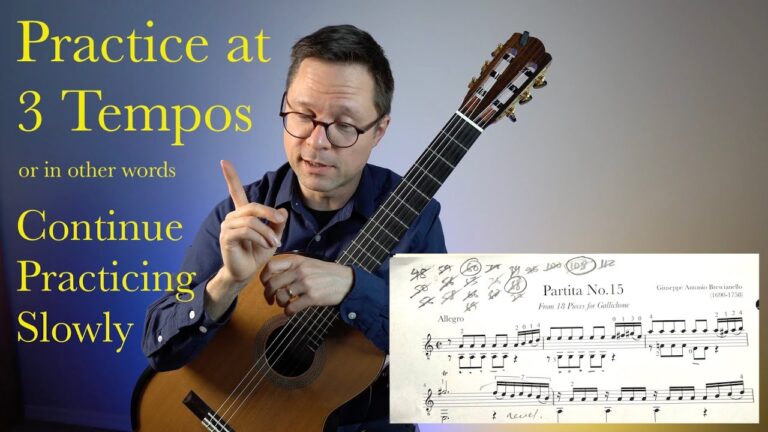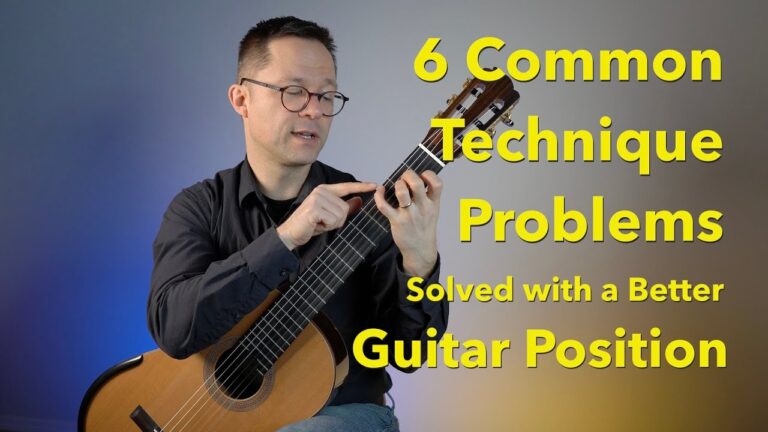Right hand movement when playing across the strings during scales and similar textures. When moving across all six strings there are three concepts that can be taught by instructors either exclusively or use in combination. This is for scale-like passages, not arpeggios such as Giuliani patterns or multi-voice textures. This comes via my YouTube. The exercises all come from My Technique Book.
1) Perfect hand position with arm movement – This makes sense because the fingers can move in the exact same way on each string allowing for the ideal hand position and finger movement. The consistency in the muscle memory of this method make it very memorable and ergonomic. The main difficulty for beginners is relaxation in the arm movement.
2) Centred hand with small wrist and arm pivot – If you start with your hand set up for the 4th or 3rd string you only need a small pivot in the wrist and forearm to reach the trebles or basses from that central point. The downside is that if the movement is not subtle enough the student’s hand position can get compromised which may not be ergonomic.
3) Centred hand with small extension/contraction of the fingers – Similar to the above, if positioned for the 4th/3rd string in a static hand position, a small extension of the fingers to the trebles or contraction to the basses is possible. Again, the downside is that if the movement is not subtle enough the student’s hand position can get compromised which may not be ergonomic.
What do I teach?
I always begin by teaching a perfect hand position that the arm moves around to different strings. Again, this is for scale-like passages across all the strings, not arpeggios such as Giuliani patterns or multi-voice textures. I believe that finding a secure and ergonomic hand and finger motion is essential and finding that position is difficult if including other concepts. So I teach this one method until the student has a strong foundation, muscle memory, and relaxation.
At later stages I believe that you can utilize all three of these elements to achieve a subtle and ergonomic playing hand that is flexible depending on the situation. In general, I’ve also found that the subtle wrist and finger extension comes very naturally when the student works on relaxation after establishing the perfect position in the right hand, to the point of me not having to usually teach it at all.
Ideally, the student will always reflex back into the perfect hand position if using the pivot or extension method. That is way I push the first method so intensely.
Examples
Playing a scale across all six strings in order – Here I often utilize Option 1 where you have a set hand position and the arm moves it around.
Melodic patterns that skip up and down the strings – Here a pivot in the arm is useful because you don’t want to be constantly moving the arm back and forth.
Multi-voice textures and more complex patterns – Here the pivot or very small over extensions can be useful to maintain a static and stable hand while making adjustments to the complexity of the music.





Thank you Bradford Werner, I am going to practice all three motions. Enjoy your videos they are really helpful. Your Technique book has alot of great Information. I have a papercutter and have all your books in plastic sleeves in binders. Only in level 3 book but I am having fun.
Level 3 is quite high! I know it might not seem like that but it is full on classical guitar playing. Take your time and enjoy.